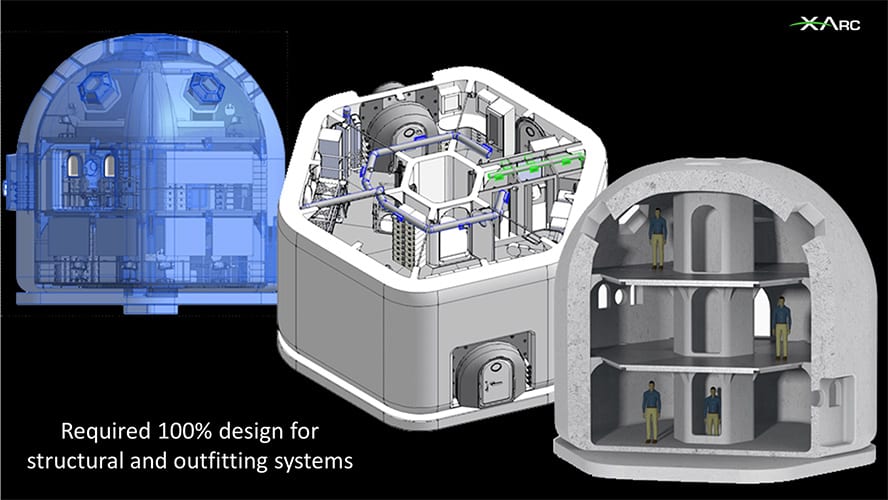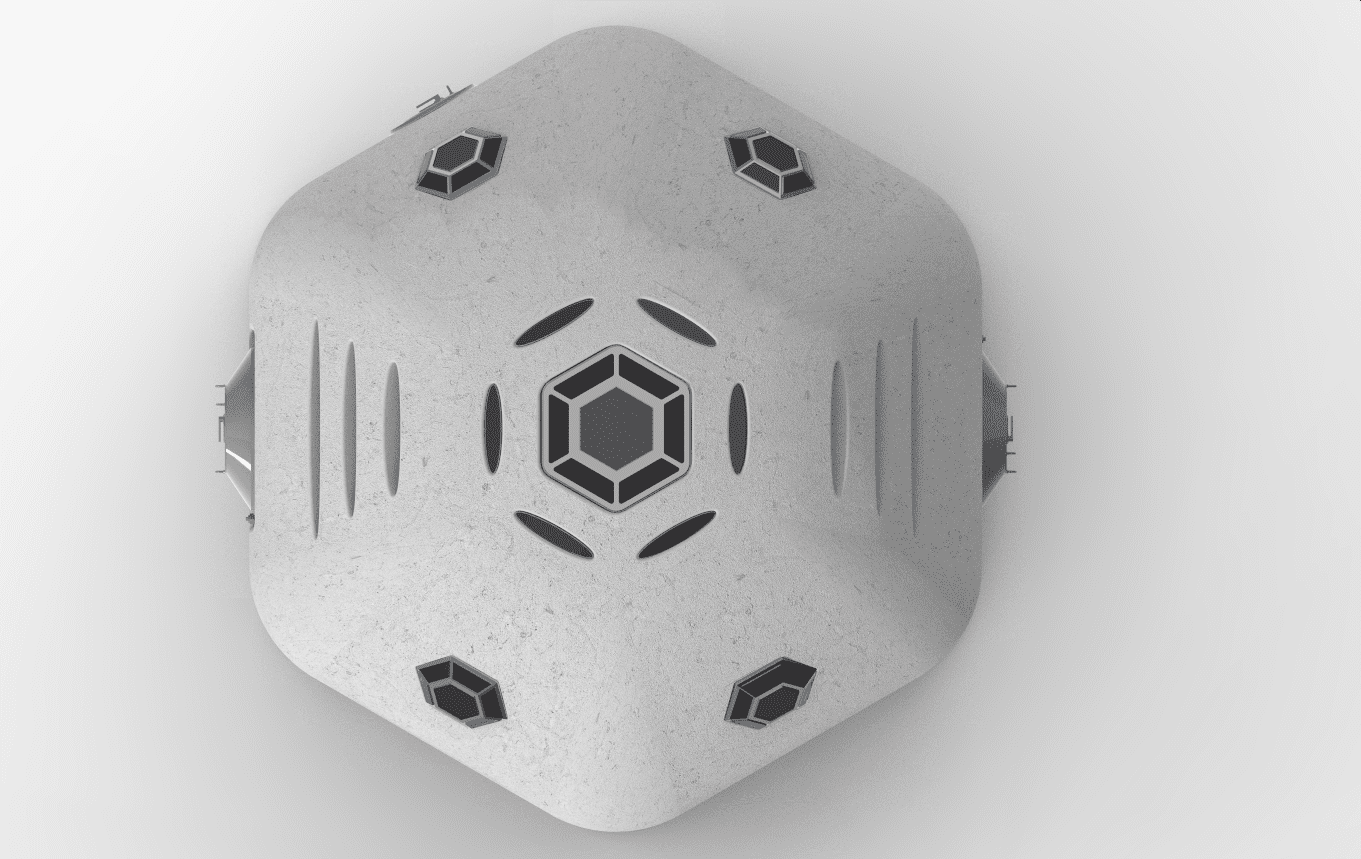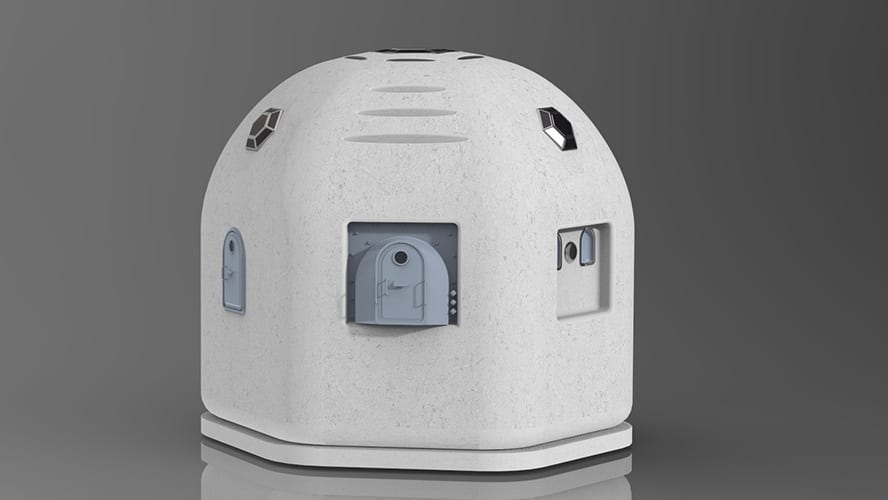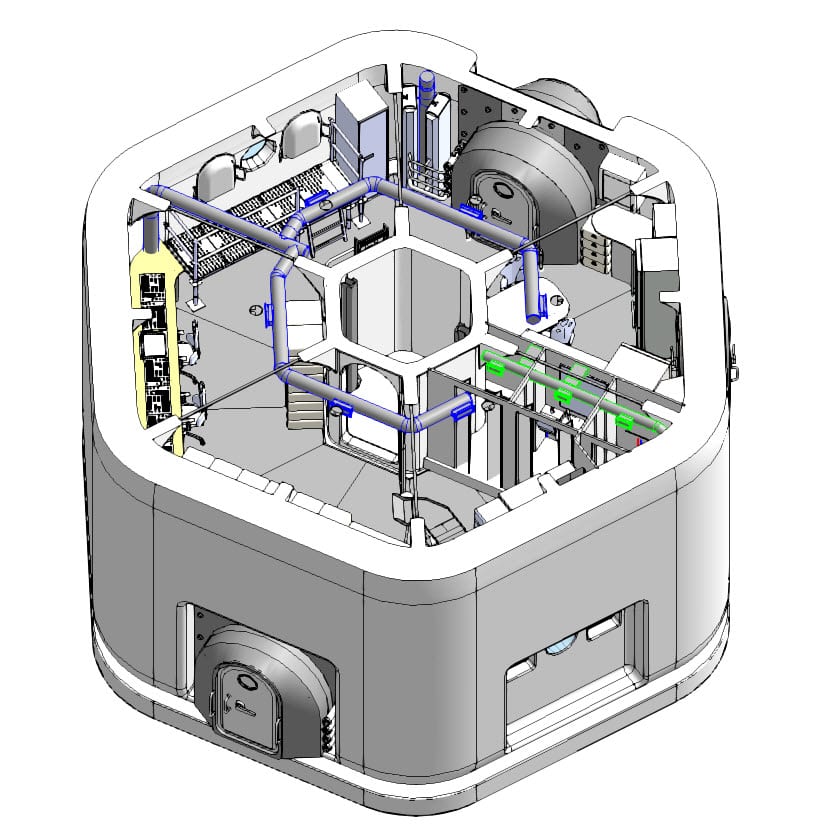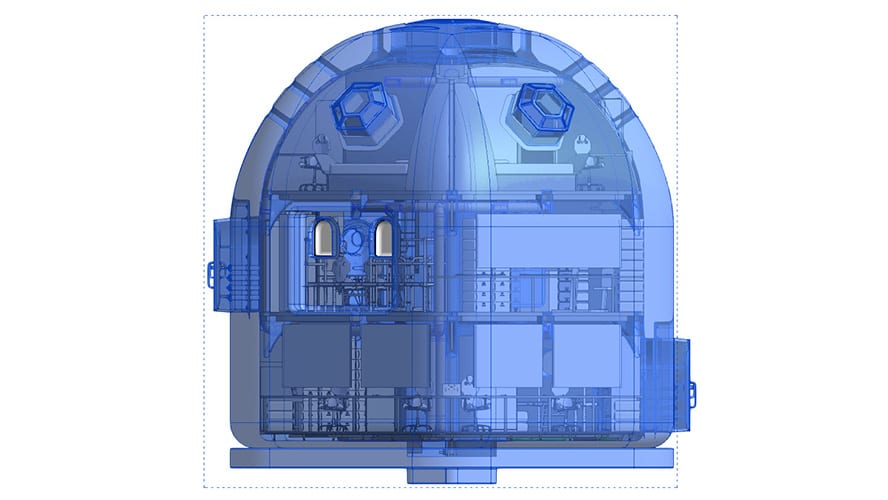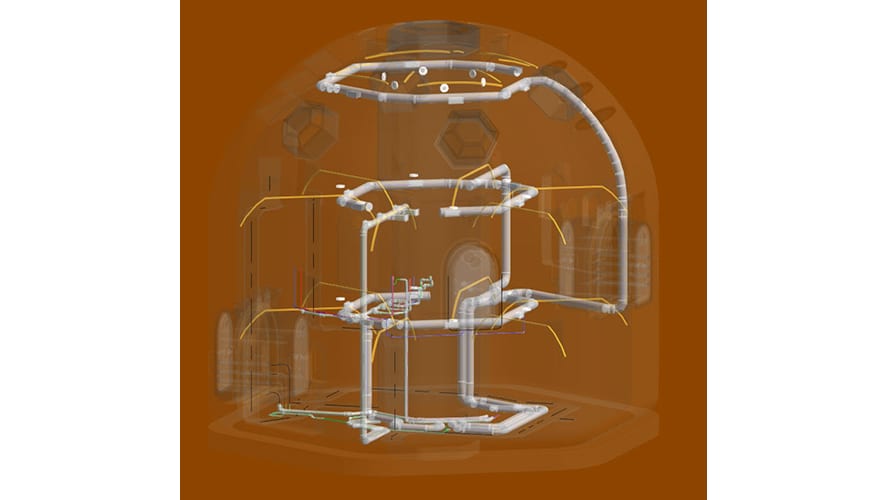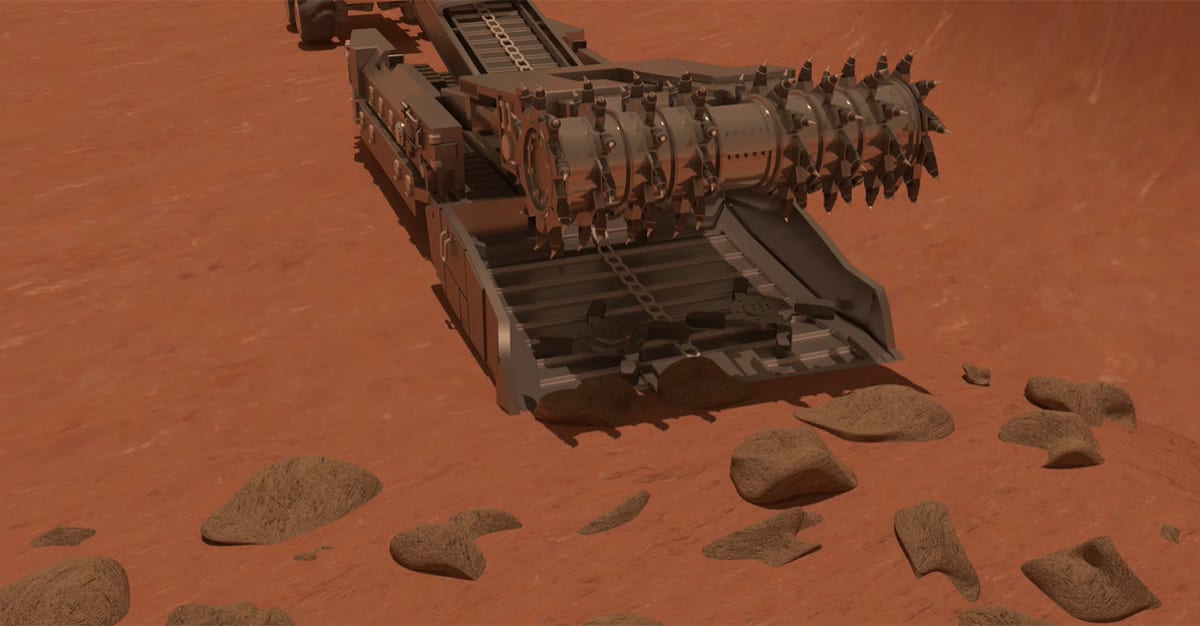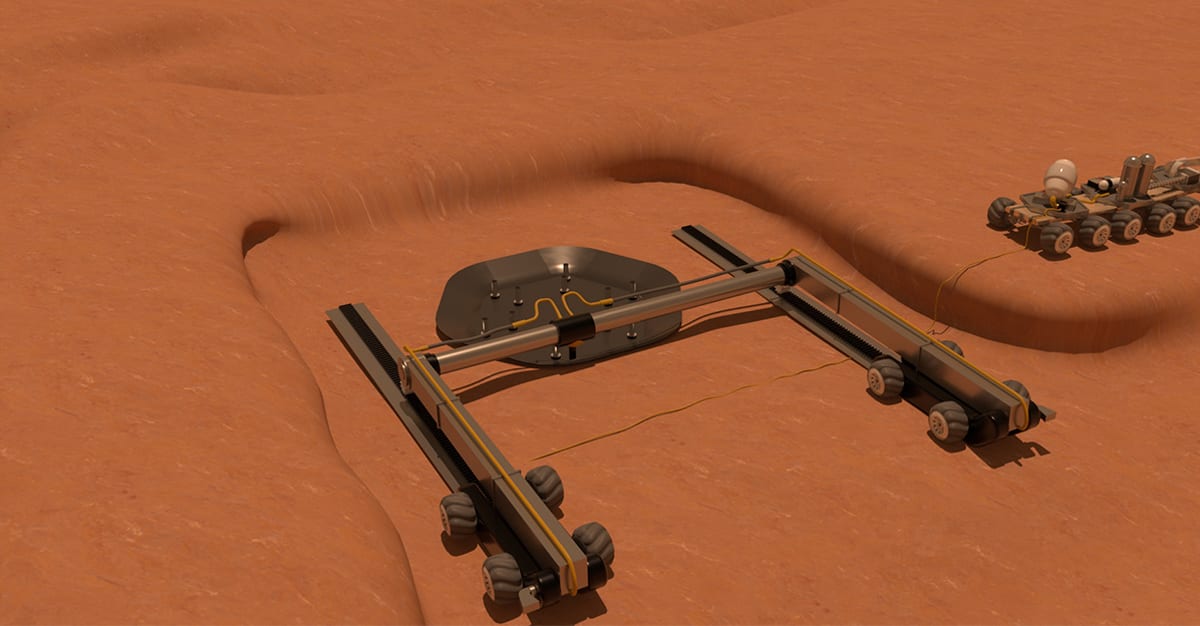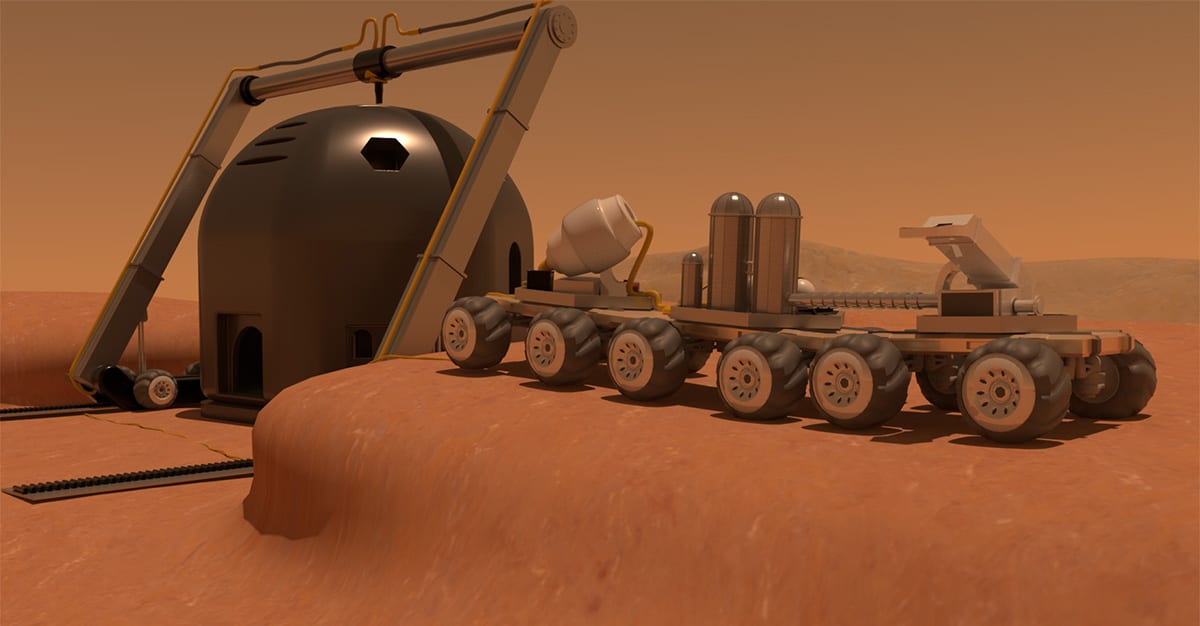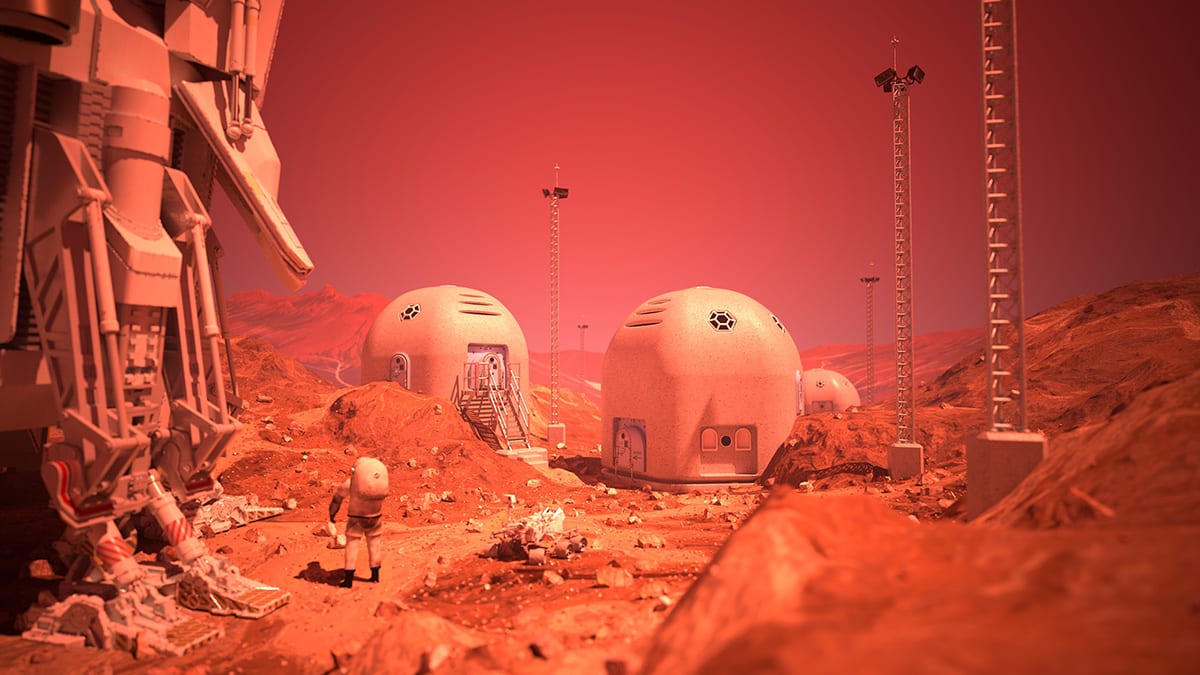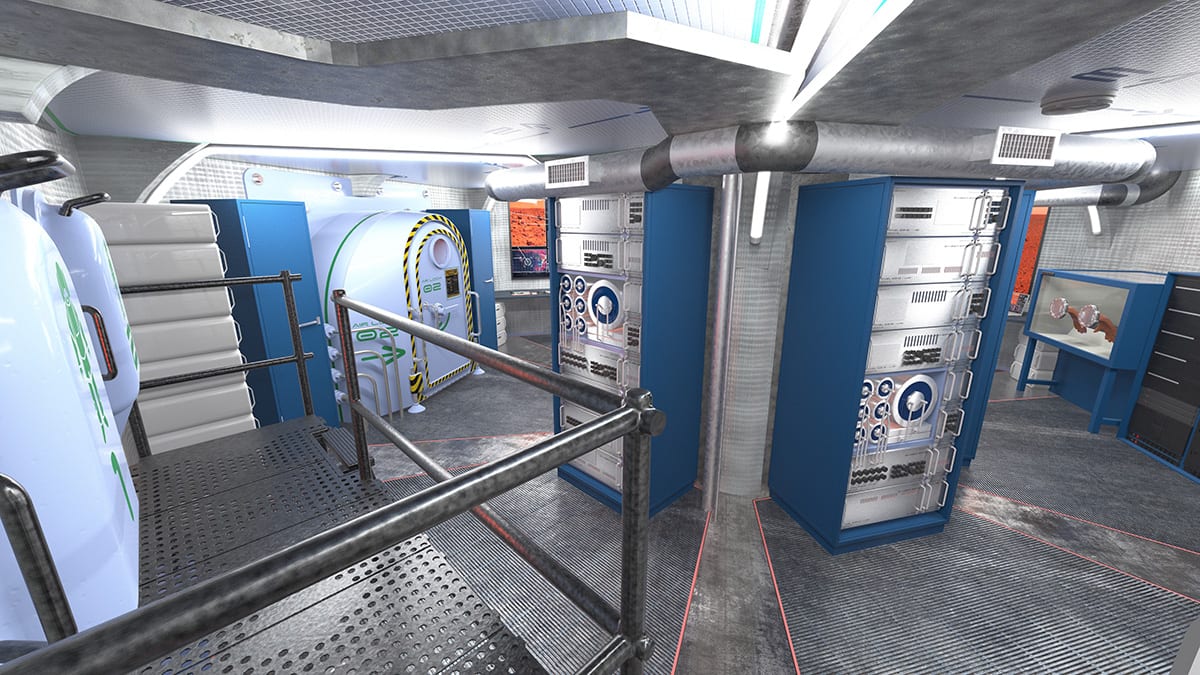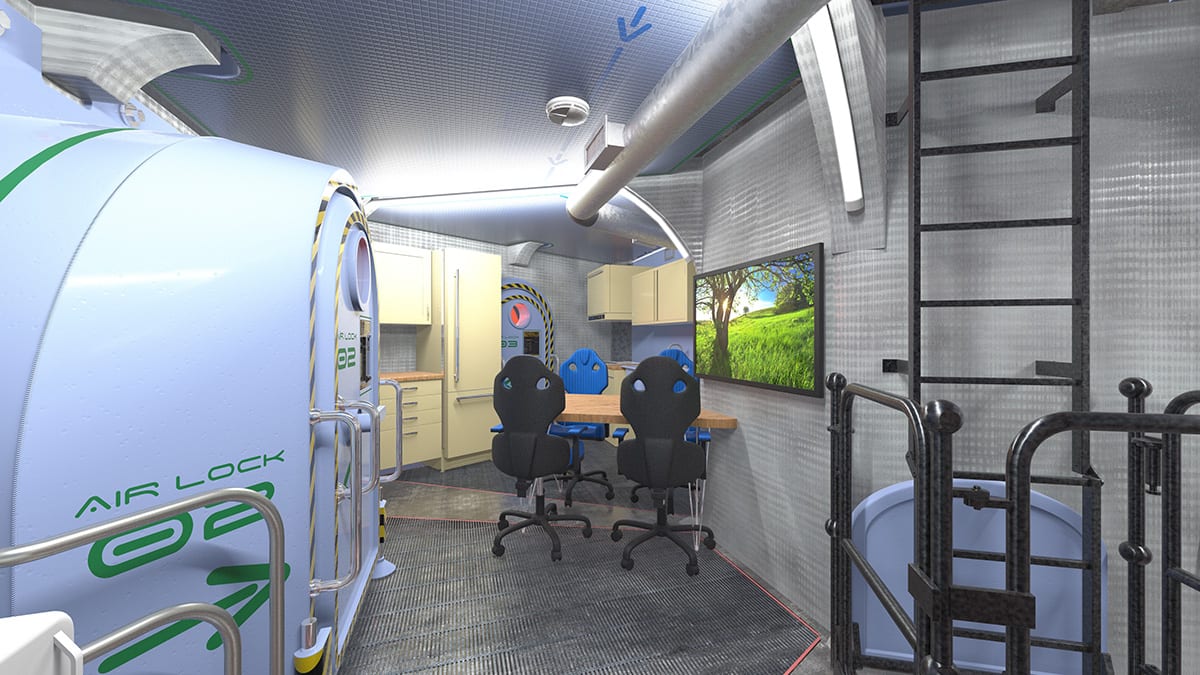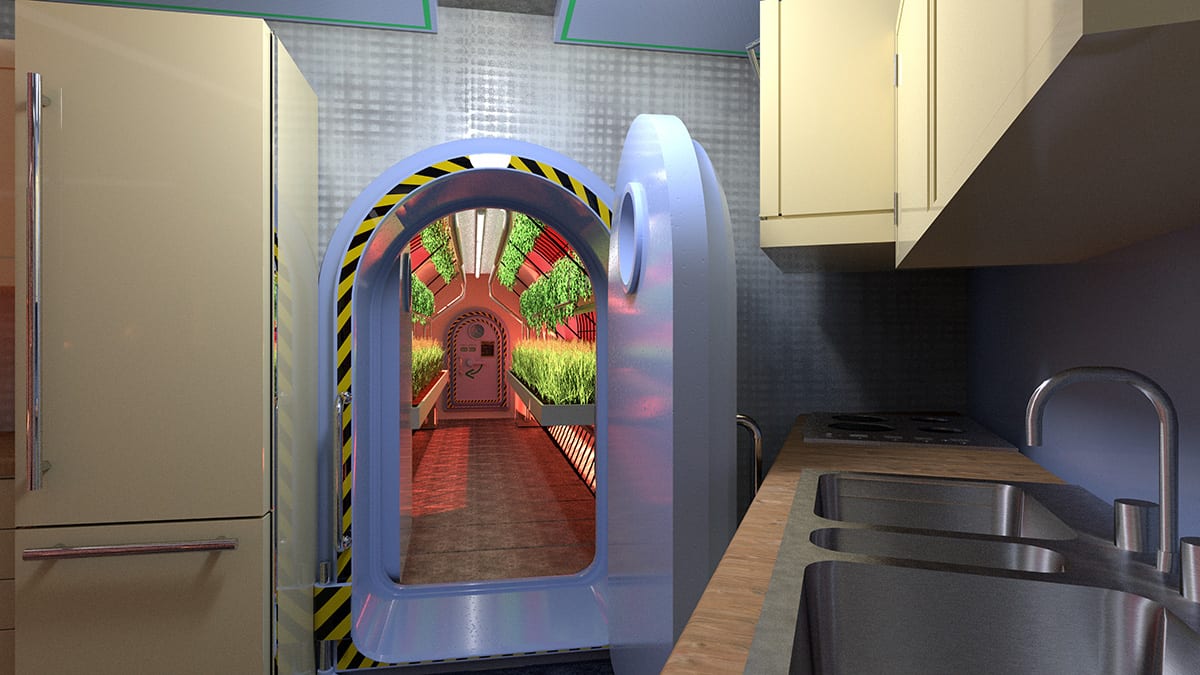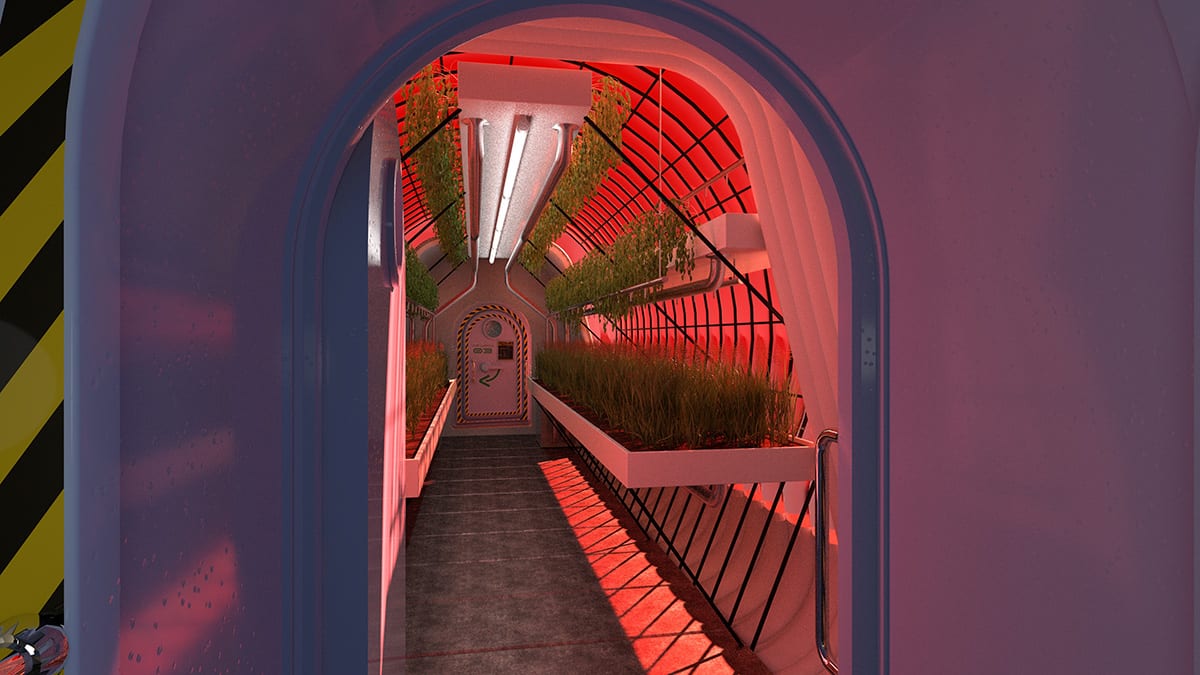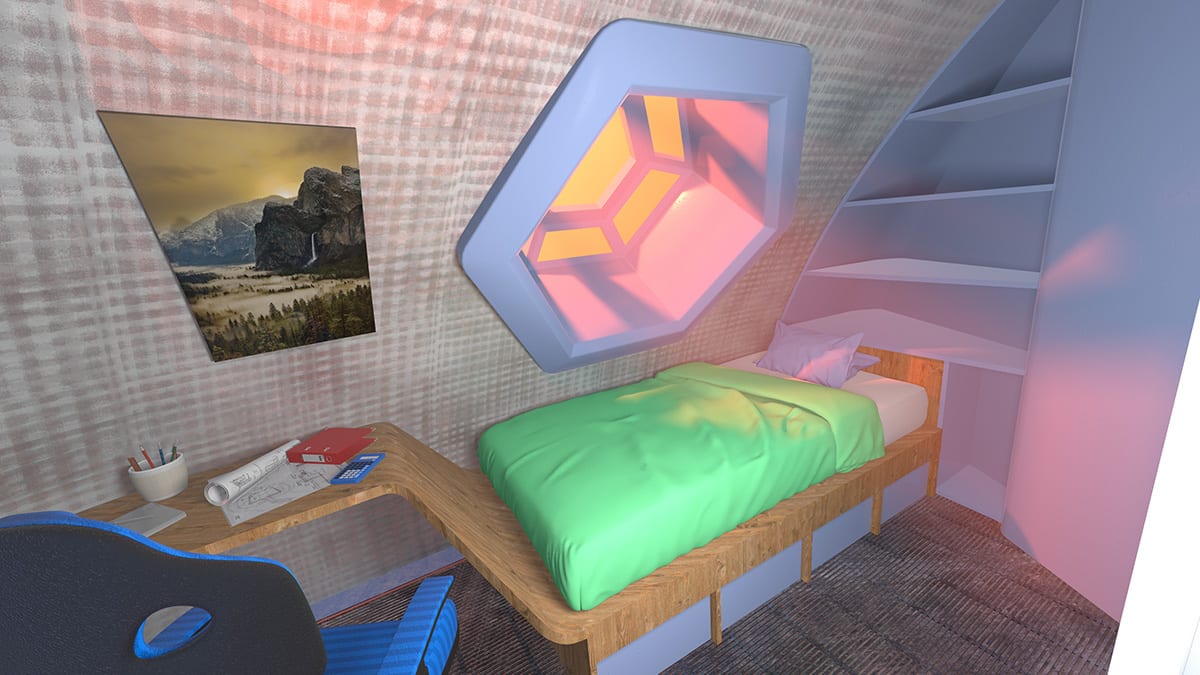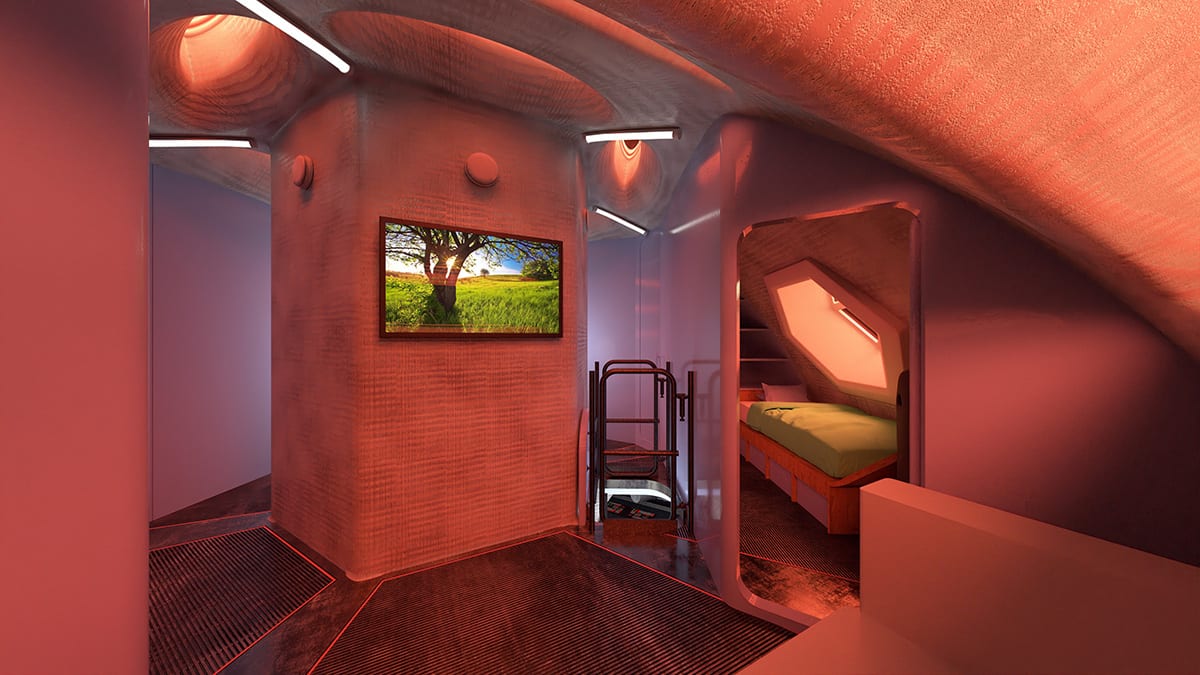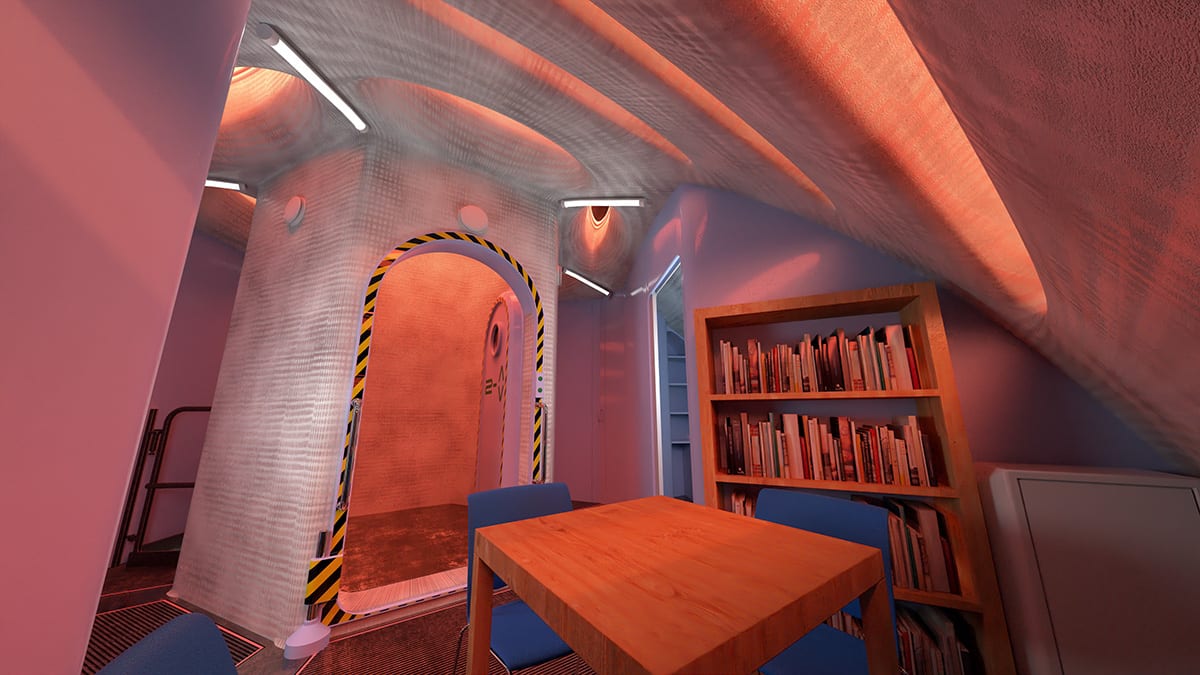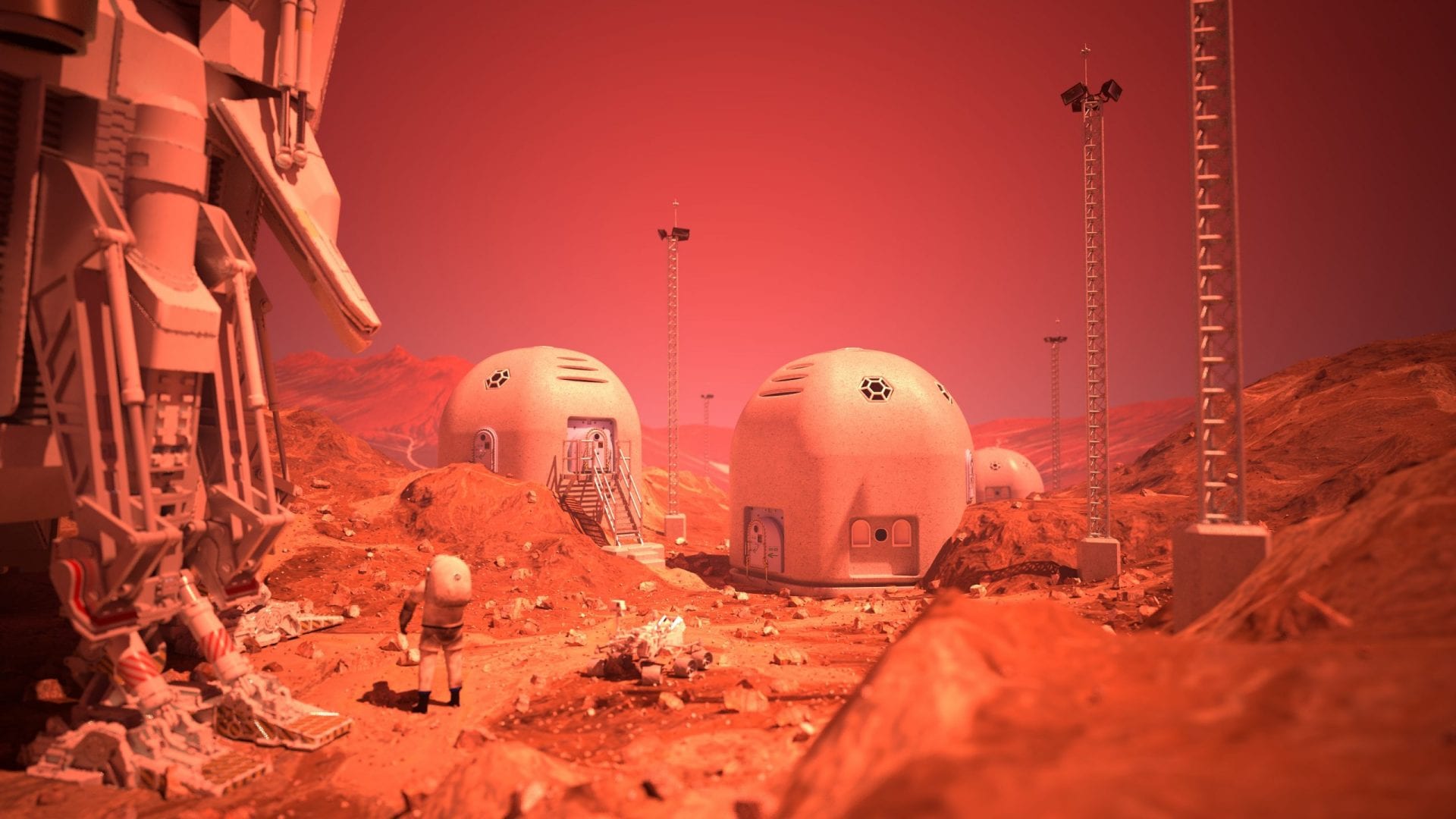HexHab is a 3D constructed printed shelter designed for long-term occupancy in extreme, inhospitable planetary environments such as Mars or the Moon. Additive construction technology is used to autonomously construct a core shell structure which can then accommodate a variety of outfitting needs depending on mission goals and location.
Core Structure
The HexHab design concept provides a sturdy, extreme environment, in-situ constructed, protective platform that serves as a core shell enabling multiple secondary structure outfitting options for habitability, together with research and science functions.
HexHab Floor Plan and Secondary Structures Outfitting
Our HexHab design takes its cue from nature and relies on the simplicity and versatility of this geometric shape, grounded in functionality, for autonomously constructing in-situ shelters for human habitation on distant worlds. To maximize internal volume, HexHab begins with a hexagonal footprint intersected with a dome to provide three levels of habitable volume and floor area. It is designed and outfitted for a crew of four to live and work comfortably.
Robotic Construction Elements
HexHab 2.0 print material is produced from Mars’ atmosphere, regolith and water. Robotic elements are used for excavation, feedstock mixing, processing, and piping to a 3D printer.
Construction and Outfitting Sequence
The first construction phase begins with autonomous robotic bulldozers removing regolith and digging a trench for the foundation. The regolith is piled near the production site away from the subterranean foundation. A separate section of icy regolith is collected nearby and processed for its unique watery properties. Excess excavated regolith becomes backfill for the ground floor of the completed shelter. Transport of large bulk outfitting items is robotic and crew-assisted once the construction outfitting crew arrives.








